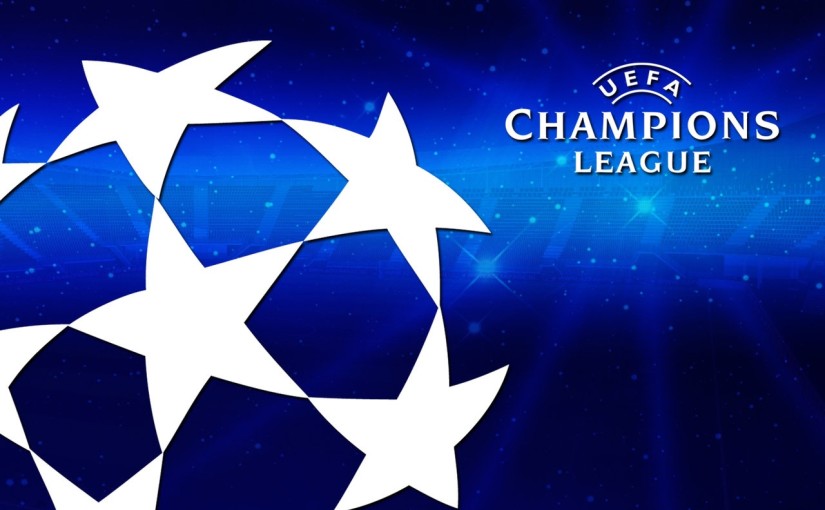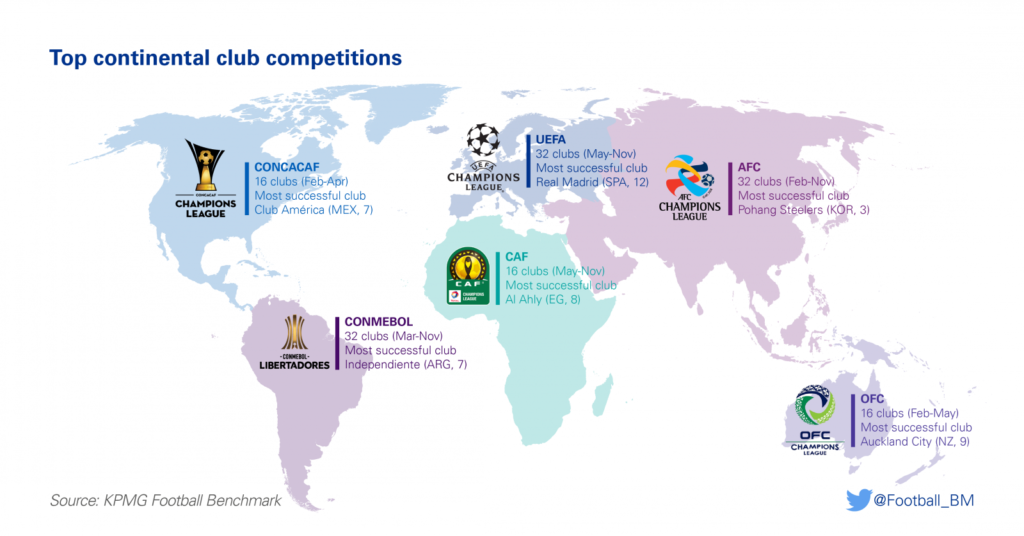October 19 – With the UEFA Champions League group stages gathering momentum, the Champions League of South America, Asia and Africa are all coming to their conclusion with finals taking place this November. KPMG’s Football Benchmark has reviewed the status of these leagues by confederation.
The common thread across all the regions is that the confederations have recognised the importance and opportunity of international club competition. The AFC (Asia), CAF (Africa) CONCACAF (North and Central America and Caribbean), and CONMEBOL (South America) have all re-versioned their Champions League structures in a bid to build value and more competitive championships. The results are being seen in improved TV and sponsor deals.
The report concludes that as football professionalises outside Europe “and as domestic competitions grow stronger this also improves the regional Champions Leagues, creating exciting cross-border rivalries and increased media attention. However, with clubs often being national brands rather than international names, governing bodies need to step-up their efforts to continue raising the profile of their club competitions.”
Looking at the Champions League changes by confederation, Football Benchmark lists the key events in their development:
CONMEBOL: The Copa Libertadores has doubled payments to clubs hosting matches, from $300,000 to $600,000, and cancelled the need for clubs to pay 10% of matchday revenues to the confederation. The Copa Libertadores format has also been revamped, moving from a seasonal tournament (February to July) to a year-long competition (March to November) with participants growing from 38 to 47. First commercial results are a new $1.4 billion (minimum guaranteed) deal with IMG and Perform for the 2019-2022 media cycle.
CONCACAF: Competition has moved from a 24-team group stage with a play-off tournament to a 16-team knock-out format in a move to focus on quality, thought the reality is that half the teams are from two nations – Mexico and the US – which creates strong rivalries in the two biggest markets but is unlikely to ignite the passion of the region with a broad-based competition.
CAF: This season saw the start of a controversial 12-year $1 billion media cycle, that has as one of its assets a Champions League with participants increased from eight to 16. Discussion is underway to increase the number of teams with guaranteed slots for the most professional leagues in the confederation.
AFC: The Asian confederation significantly reviewed its club tournaments in 2002, and last modified the AFC Champions League in 2014. Covering a vast territory, long-distance travel represents a challenge for clubs and fans, while multiple time zones plays havoc with broadcasting schedules. The last modification included further regionalising of the competition, separating western and eastern clubs, something which had only previously only occurred in the group stage, all the way through to the final.
Critics of the new format argue that clubs on the Eastern half of the draw have a tougher path to the final. Japan’s J-League and South Korea’s K-League, combined with the rapid growth of China’s Super League and the Australian Association joining the AFC in 2006, has resulted in East Asian clubs often being final favourites.
See the full report at https://www.footballbenchmark.com/top_club_competitions
Contact the writer of this story at moc.l1713953645labto1713953645ofdlr1713953645owedi1713953645sni@n1713953645osloh1713953645cin.l1713953645uap1713953645


